
The today’s flag of Slovakia was introduced on the 1st of January in 1993 on the occasion of the independence. It shows three horizontal stripes in white, blue and red with the coat of arms near the flagpole. The appearance of the flag and coat of arms was regulated in the "Act of the National Council of the Slovak Republic on the National Symbols of the Slovak Republic and their Use of 18 February 1993", but without mentioning the colour shades. The colour print in the Law Gazette on page 371 suggests that the following Pantone shades could correctly reflect the colour shades: Red = Pantone 185, Blue = Pantone Reflex Blue. Many Slavic nations create on the 19th century own flags – in context with a growing Slavic nationalism. Thereby played the Panslavism an important roll, a political movement of the 18th/19th century, which would unite all Slavs in one nation. The most Slavic nations however lived in this times under Austrian, Turkish or even German rule. The Panslavism saw in Russia a model, because the Russians were, apart from Montenegro, the only free Slavic nation. In this way the colours of the Russian flag became to an idol of the Panslavists, and in the end to a colour's pattern in the designing of the flags of many Slavic nations. Those flags carried and carry except few exceptions the Russian colours white, blue and red as mutual attribute. From there this colour's combination is named "Panslavic Colours". On 23rd of April in 1848 the Slovaks first of all adoped a white-red flag, which was added in August by the colour blue (look above, Panslavic Colours). The today’s sequence of the colours was stipulated in the year 1868. The flag however became not officially, because Slovakia was a part of Hungary until the peace-treaty of Saint-Germain on the 10th of September in 1919. Thereafter Slovakia became a component of the state of Czechoslovakia. In the year 1939 was established – unger German protection - the Slovakian Republic which adoped on 23rd of June in 1939 the white-blue-red tricolour as national flag. Between 1945 and 1992 Slovakia was transitionally a part of Czechoslovakia again. After the overthrow of the communist rule was adoped again on 1st of march in 1990 the white-blue-red tricolour as the national flag of Slovakia (still a federal partial state of Czechoslovakia). The tricolour in the colours white, blue and red however correlated the old Russian flag, which was in use until the bolshevist coup d’état by Lenin (1917) and the following foundation of Soviet Russia (1918). In context with the collapse of the Soviet Union Russia adoped on 23rd of August in 1991 its old tricolour again. The flag of Slovakia equaled now the flag of Russia. Because of that was decided in context with the passing of the new constitution of the independent Slovakia in September 1992 to complete the flag since the 1st of January in 1993 by the coat of arms.
Source: Flaggen und Coat of arms of the Welt,
Wikipedia (DE),
Flags of the World,
zákon o štátnych symboloch z 18. februára 1993,
Volker Preuß


Coat of arms of Slovakia,
Source, by: zákon o štátnych symboloch z 18. februára 1993

The coat of arms of Slovakia shows an early gothic round shield in red with a white twin-cross on a blue triple-mountain. It is derived from the historic coat of arms of Upper Hungary and remembers to the earlier affiliation of Slovakia to the Kingdom of Hungary. The triple-mountain stands for the Slovakian mountains Tatra, Matra and Fatra. Since 1848 in Slovakia it was coloured blue instead of green. The byzantinic twin-cross remembers the christianization of the country in the 9th century and stands for the three saints Benedict, Constantin and Michael.
Source: Flaggen und Coat of arms of the Welt,
Wikipedia (DE),
zákon o štátnych symboloch z 18. februára 1993,
Volker Preuß


since 1993,
Aircraft Roundel,
Source, by: Wikipedia (EN)

1940–1945,
Aircraft Roundel,
Source, by: Wikipedia (EN)

1944, Coup plotters,
Aircraft Roundel,
Source, by: Wikipedia (EN)

Location:
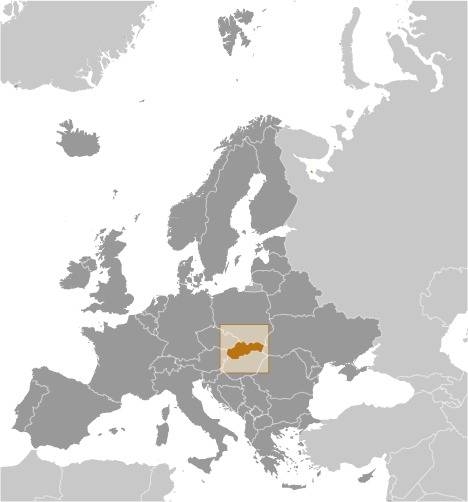
Source: CIA World Factbook
Map of the country:
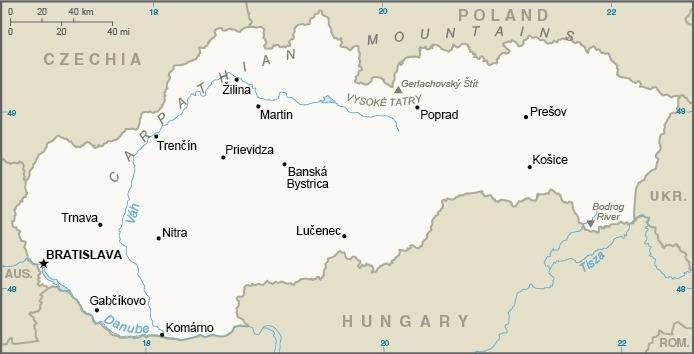
Source: CIA World Factbook

Area: 18.932 square miles
Inhabitants: 5.500.000 (2023), thereof 84% Slovaks, 8% Hungarians, 0,6% Ukrainians and Rusyns, 0,5% Czechs, 0,1% Poles, 0,1% Germans
Religions: 60% Roman Catholic, 9% Protestant, 24% Non-Religious
Density of Population: 291 inh./sq.mi.
Capital: Bratislava (German: Pressburg, Hungarian : Pozsony), 476.922 inh. (2022)
official Language: Slovakian
other Languages: Hungarian, Czech, German
Currency from 1st of January in 2009: 1 Euro (EUR, €) = 100 Cent
Currency to 31st of December in 2008: Slovakian Crown (Sk) = 100 Heller
Time Zone: GMT + 1 h
Source:
Wikipedia (D)

antiquity · settlement by Celts
300–200 B.C. · settlement by Suebs, Vandals, Quads, Markomans and Langobards
6th century · settlement by Slovaks, dependence from the Awars
8th century · dependence from the Frankish Empire
9th century · to the Great Moravian Empire
10th century · Bohemia, Poland and Hungary try by turns to annex Slovakia
1018 · Slovakia becomes a part of Hungary but remains initially a partial principality (tertia pars regni)
1321 · with Mattheus of Trentshin dies the last Slovakian prince
1687 · Slovakia comes with Hungary to the Habsburg dynasty
10th of September 1919 · peace treaty of Saint-Germain, Slovakia becomes independent from Hungary, but becomes united with Czechia (Bohemia) to the State of Czechoslovakia
14th of March 1939 · the Slovak People's Party proclaims under Josef Tiso (1887–1947) the Slovakian Republic, joining to the Three-Mights-Pact (Axis)
1st of September 1939 · invasion of German and Slovak troops in Poland (3rd of September 1939 France and United Kingdom declare the war to the German Empire, onset of the Second World War)
1941–1945 · participation of Slovakia in the war of the German Empire against Soviet Union, 1944 coup of one third of the Slovak army aginst the Slovak People's Party and German occupation troops, 1945 occupation by soviet troops
May 1945 · restoration of Czechoslovakia as socialistic republic under soviet influence
18th of April 1947 · execution of Josef Tiso
1st of January 1969 · Slovakia becomes a federative partial state (Slovakian Socialistic Republic) within the Czechoslovak Socialistic Republic (ÇSSR)
1989 · overthrow of the communist regime in Prague, ambitions for independence in Slovakia
17th of July 1992 · Slovakia declares its sovereignty
2nd of September 1992 · constitution
1st of January 1993 · ultimate separation from Czechia, Slovakia becomes independent
2004 · Slovakia becomes a member of the European Union
2009 · Slovakia joins the Euro Zone
Source: Atlas zur Geschichte,
Wikipedia (DE),
World Statesmen

The name of the country has its roots of course in the Slovaks, the most important ethnic group of the country. The word "Slovak" is derived from the Slavic word "slovit", what means "speak". The Slovaks are in this way the "speaking". Noteworthy are the parallels to Slovenia, Slavonia and to the "Slavians" anyway.
Source: Atlas der wahren Namen, Handbuch der geographischen Namen


![]()

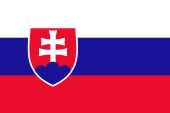



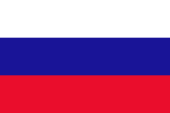
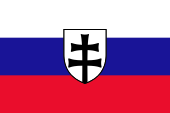
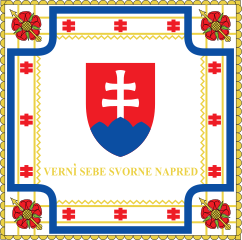






![]()
